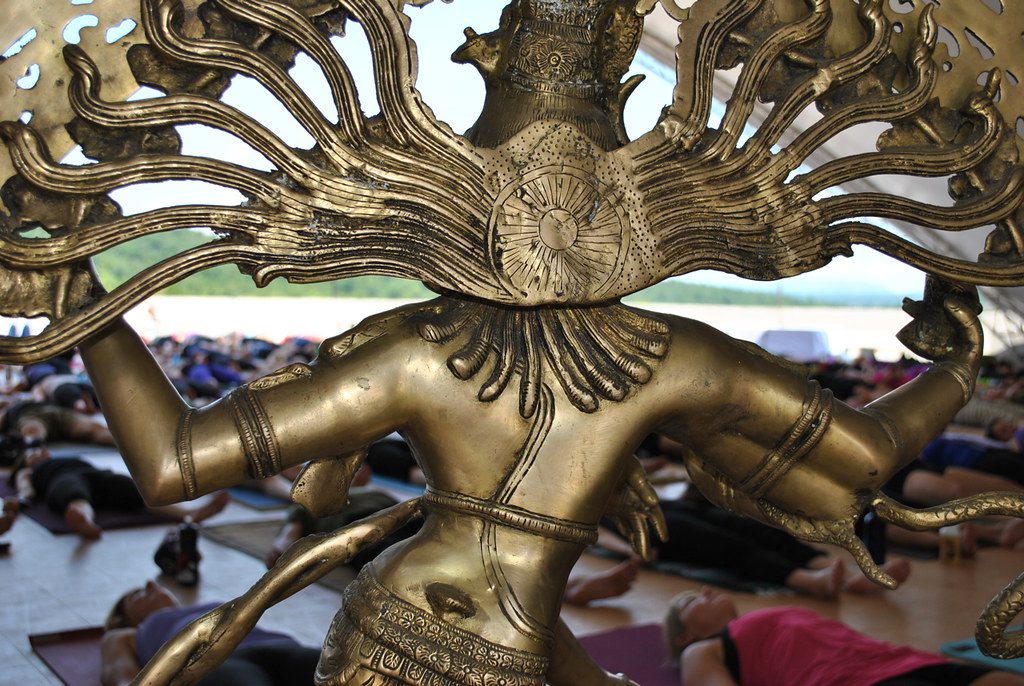
When we speak about yoga practice, the foundation we always come back to is Patanjali’s Yoga Sutra, a compilation of 196 cryptic verses that outline the eight limbs of yoga.
The sutras provide yogis with guidance toward leading a yogic lifestyle and cultivating mindfulness. But just who was this mystery sage?
No one knows exactly when Patanjali lived.
Rumor has it that the sutras were written some 1,700 years ago, but this has been widely debated by practitioners, scholars and teachers alike. Some believe that Patanjali lived in the second or third century CE; others claim it was the 4th century CE; still, others posit that it was about 50 CE. While some believe that the sage wrote the sutras around 400 BCE—which is the most widely accepted date, others still insist that they were written 5,000 years ago. Most of the speculations are made in correspondence with other texts of these periods, as well as the notion that Patanjali himself had written other works on Ayurveda and Sanskrit over the course of many centuries. There is really no way to know which time period is accurate, so we can all agree to disagree.
Patanjali was most likely not just one person.
It is widely disputed whether Patanjali was one man, or if the sutras attributed to him are actually a compilation of ideas from many sages and practitioners. (Think: the Vedic Shakespeare.) A man named Patanjali has been credited with two other texts as well, one on Sanskrit grammar (Mahabhashya) and one on medicine (Charakapratisanskrita). Because of the widely debated time frame of Patanjali’s life, it is posited that the surname Patanjali refers to a lineage of many sages, teachers, and students, and we refer to him as one man for convenience’s sake.
There are many myths in circulation about Patanjali’s life, one of which depicts the sage as a snake falling from heaven.
Being a figure of great mystery, there are numerous myths about how Patanjali came into being. As one story goes, Lord Vishnu was once sitting atop Lord Adisesa, the Lord of Serpents, watching the dance of Lord Shiva when his body began to vibrate in rhythm with Shiva’s. This passing of vibrations and grace enchanted Lord Adisesa, who decided that he would devote himself to the art of dance. Lord Adisesa meditated in the hopes of determining who would be his mother and had a vision of Gonika, a virgin yogini who was praying for a son onto whom she could pass her knowledge. She prayed to the Sun, and when she opened her palms she saw a small snake that soon transformed into a small male form. Hence he was named Patanjali, for Pata means falling and Anjali refers to the prayer mudra.
Patanjali’s sutras were not written for intellectual speculation and debate but as practical methods of raising awareness.
Before Patanjali wrote the sutras, it was customary for practitioners to memorize them in their entirety. The sutras act as guidelines that can only be understood through personal experience and practice. They are a path by which we may achieve liberation of the mind.
The sutras are short and sweet for a reason.
As per Sanskrit grammar rules, a sutra should follow the following conditions:
- Alpaaksharam – small in size
- Asandgdham – clear and free from doubts
- Saaravat – deep in meaning
- Viswatomukham – universal applicability
- Astobham – practicability
- Anavadwayam – the subject must be a reality
The mysteries surrounding the core text of yoga will remain forever unknown. We can learn from the ambiguity of the Yoga Sutras’ attribution, realizing that we are a small part of a greater and ever-evolving fabric. We attribute our understanding of yoga to our teachers, and to their teachers, dating back to the origin of this practice, in as much as we learn from our own experience of it. Perhaps Patanjali was a man who wrote down teachings that had been passed down to him. Perhaps he is a conceptual founder who is part of a greater fabric of thought that was developed over centuries. The transcendence of the individual, bodily form of Patanjali seems fitting, as through practice of yogic traditions we are able to transcend the limitations of the individual self.
—
 Jillian Billard is a poet, yoga teacher, cellist and avid wanderer. A native New Yorker, she is often caught daydreaming of sprawling green fields and mountains. She trained and received her ashtanga yoga teacher’s certification in Goa, India and works at Laughing Lotus Yoga Center in Brooklyn. You can often find her with her head buried in a book, doused in lavender.
Jillian Billard is a poet, yoga teacher, cellist and avid wanderer. A native New Yorker, she is often caught daydreaming of sprawling green fields and mountains. She trained and received her ashtanga yoga teacher’s certification in Goa, India and works at Laughing Lotus Yoga Center in Brooklyn. You can often find her with her head buried in a book, doused in lavender.
